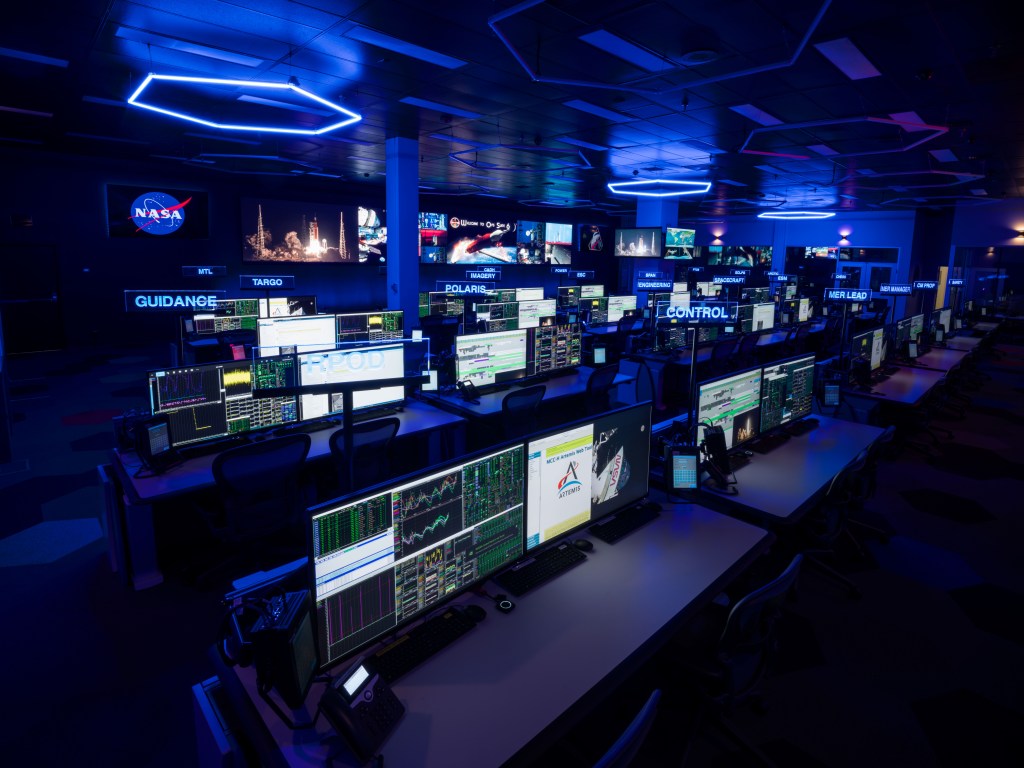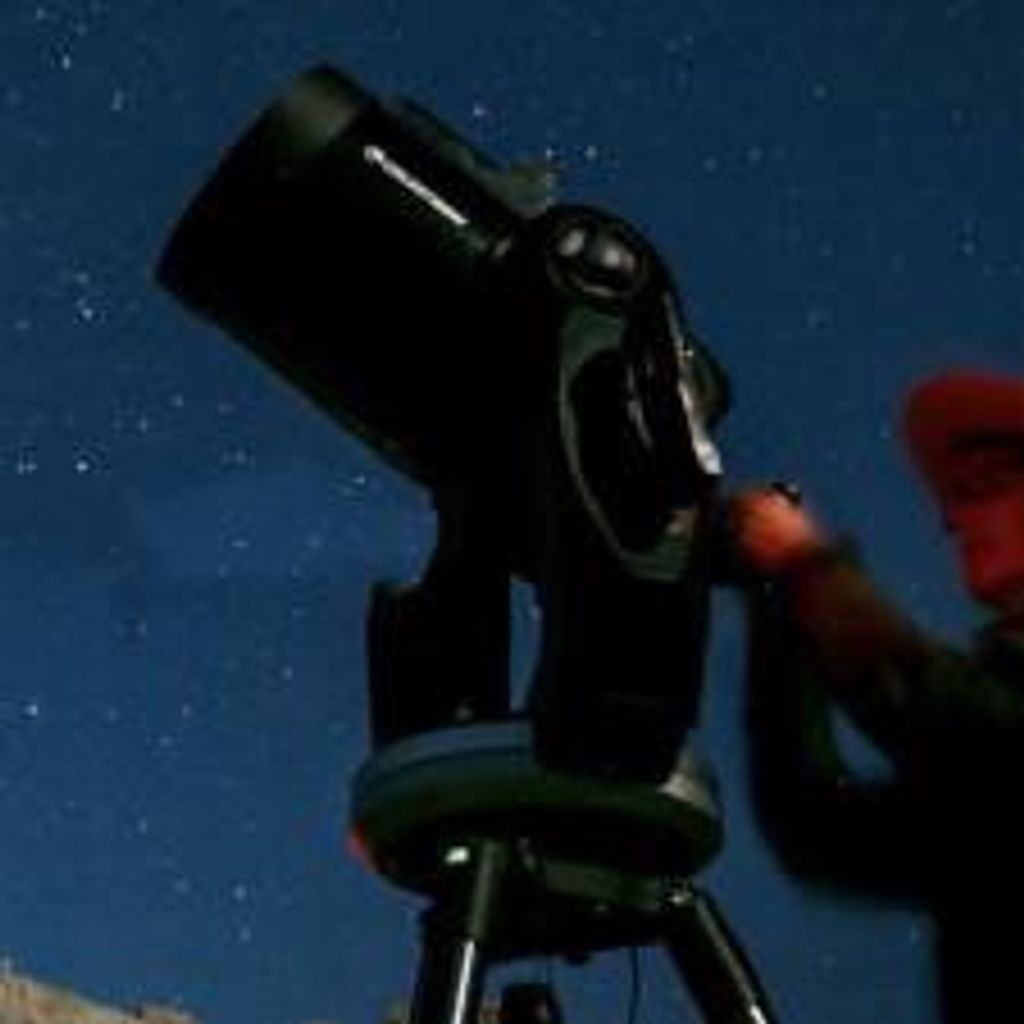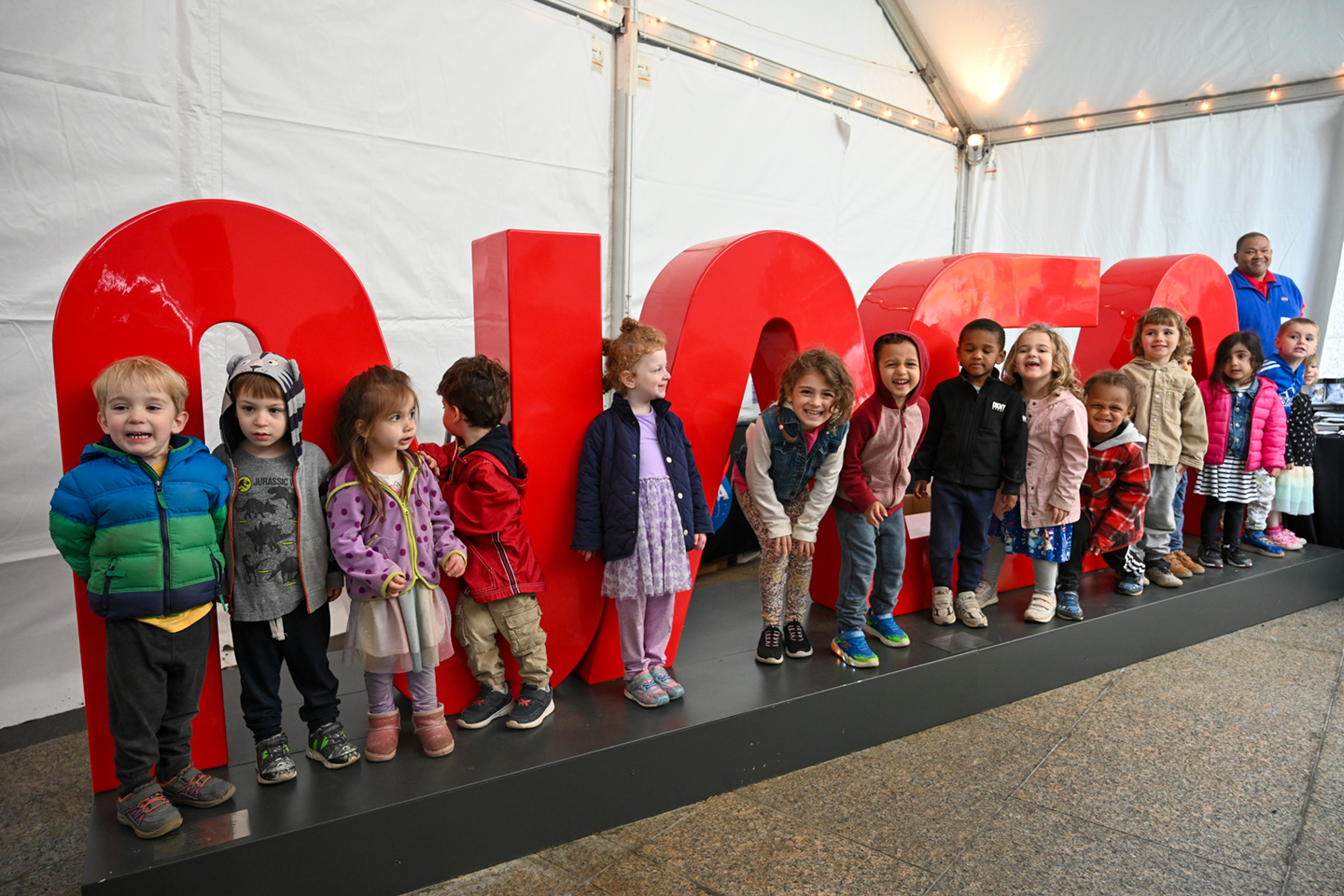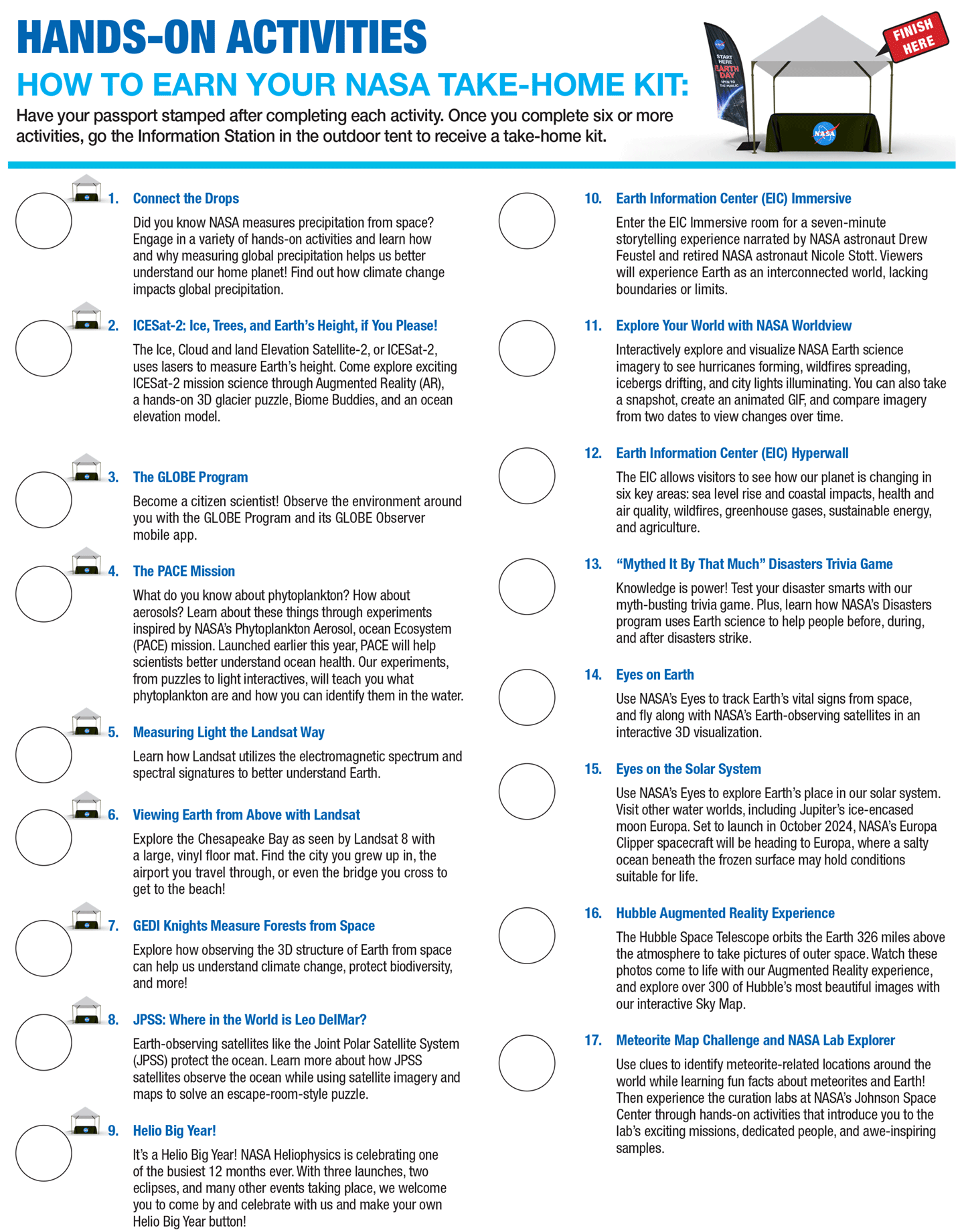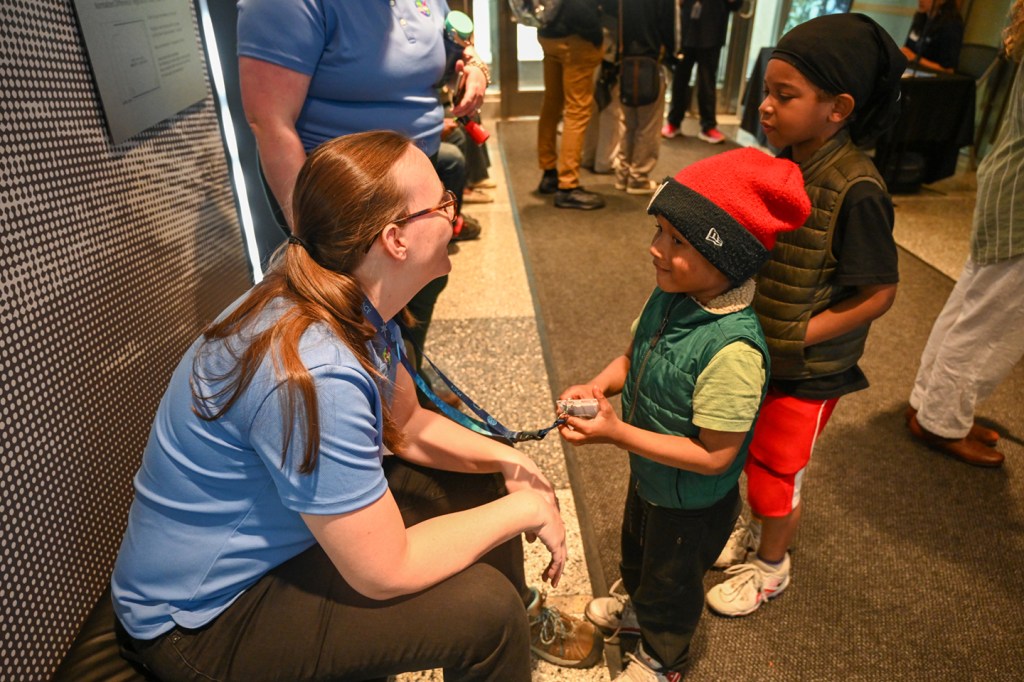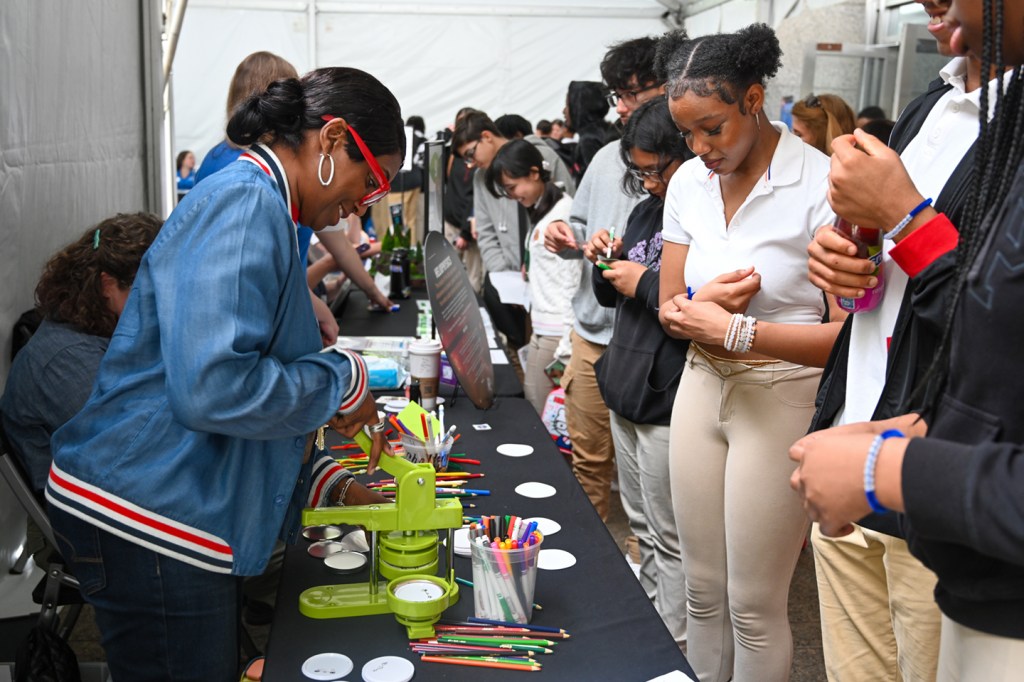Introduction
Organized by the Science Mission Directorate’s Science Support Office (SSO), NASA hosted its 12th annual Earth Day Celebration event from April 18–19, 2024. For the first time ever, the two-day event was held at NASA Headquarters (HQ) in Washington, DC.
The in-person event, which was free and open to the public, featured the newly installed Earth Information Center (EIC) exhibit – see Photos 1–4. The event featured 17 hands-on activities offered in NASA HQ’s East Lobby as well as two adjacent outdoor tents. Event participants were given an activity passport called the “Passport to Fun” listing all the activities and encouraging attendees to visit the stations and interact with NASA staff – see Figure 1. After completing six or more activities, attendees were able to claim giveaway items, e.g., lenticulars, NASA bags, posters, and calendars.
Prior to the event, Trena Ferrell [GSFC—Earth Science Education and Public Outreach Lead] arranged for groups of students from several local schools to visit the NASA Earth Day event. This included over 300 students from DuVal High School, Morgan State University, Howard University, Prince George’s County Environmental Academy, Prince George’s County Virtual Academy, International Hispanic School, and homeschoolers. On April 19, all of the students who were present at that time gathered for a plenary in the Webb Auditorium. Ferrell welcomed the attendees and provided introductions to prepare them for a virtual presentation by former NASA astronaut Paul Richards, who interacted with attendees and answered questions for roughly 20 minutes.
After Richard’s presentation, the attendees heard from Karen St. Germain [NASA HQ—Director of NASA’s Earth Science Division], whose in-person remarks emphasized to the students the crucial albeit less publicized studies that NASA does of our home planet. Related to this year’s Earth Day theme, “Water Touches Everything,” she discussed the ability of NASA’s Earth observing satellites to track water in all its forms as it circulates throughout the Earth system. St. Germain then answered questions from the audience for 15 minutes – see Photos 5–8.
NASA Administrator Bill Nelson visited the event on April 19, accompanied by Karen St. Germain and several NASA staff members who guided him as he explored the activities offered – see Photos 9–10.
Throughout the two-day event, it is estimated that as many as 1500 public participants attended along with the 300 students already discussed. While SSO staff distributed 500 activity passports, many small groups and families shared a single passport. SSO staff estimates that the true number of participants may be close to 1500 – see Photos 11–19.
Conclusion
NASA’s first Earth Day Celebration at NASA Headquarters was quite successful. While attendance was lower than previous events held at the more heavily trafficked Union Station or the National Mall, there was a steady stream of people throughout the exhibit on both days. It was also a great opportunity to showcase the new EIC to the public. Earth Day is the largest event organized annually by the SSO. This event requires months of planning, cross-divisional coordination, and intensive design of the hands-on activities – all carried from conceptualization through numerous revisions to implementation by more than 100 individuals from across the agency. This combined effort of SSO staff and assisting organizations results in an event that brings together thousands of visitors from a broad spectrum of ages and backgrounds to enjoy NASA science. This event would not have been possible were it not for the incredible efforts and collaboration put forth by so many of NASA’s outreach professionals. The SSO is grateful for all who helped to make this year’s Earth Day event a success and looks forward to Earth Day 2025.
Dalia Kirshenblat
NASA’s Goddard Space Flight Center/Global Science & Technology, Inc. (GSFC/GST)
dalia.p.zelmankirshenblat@nasa.gov






